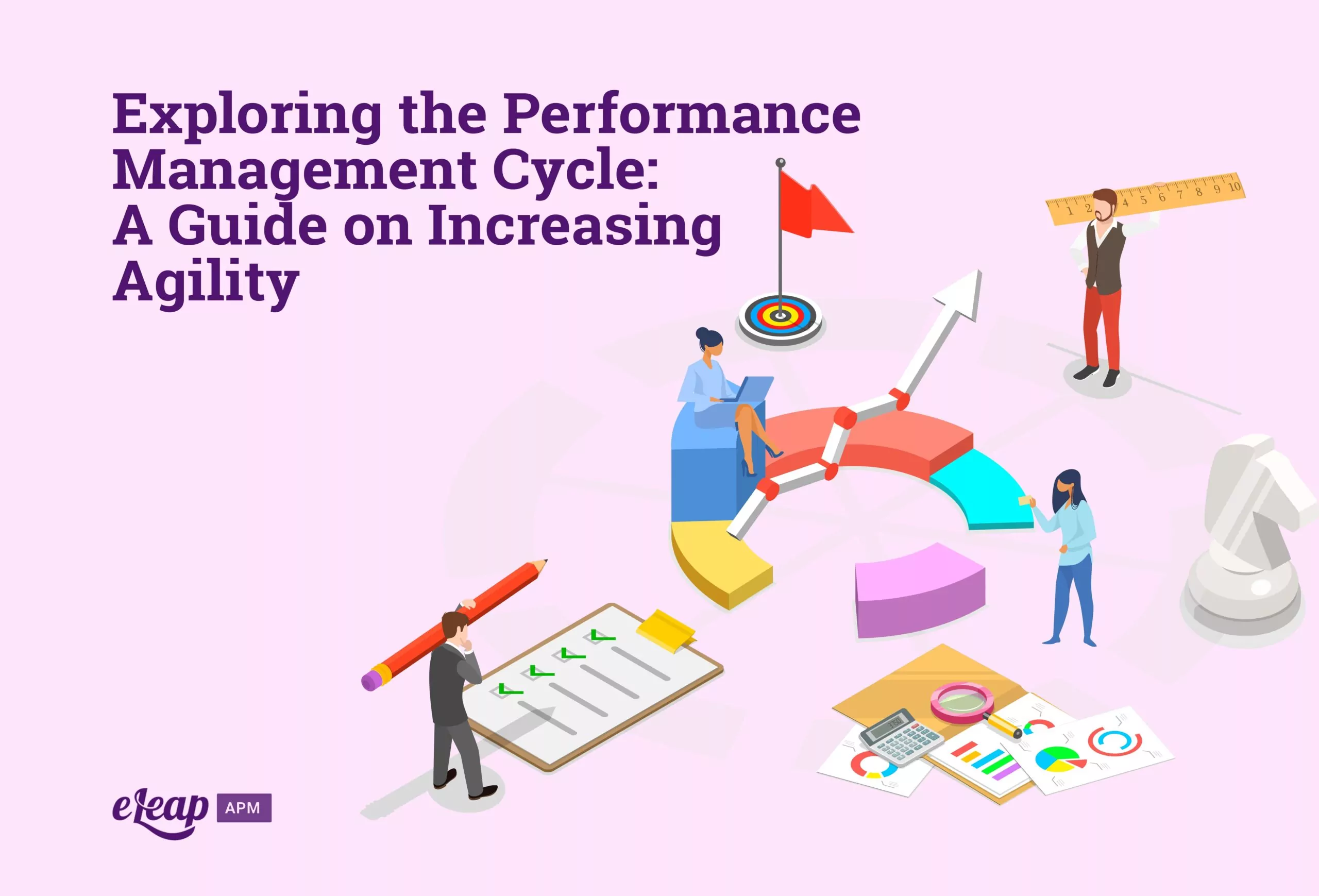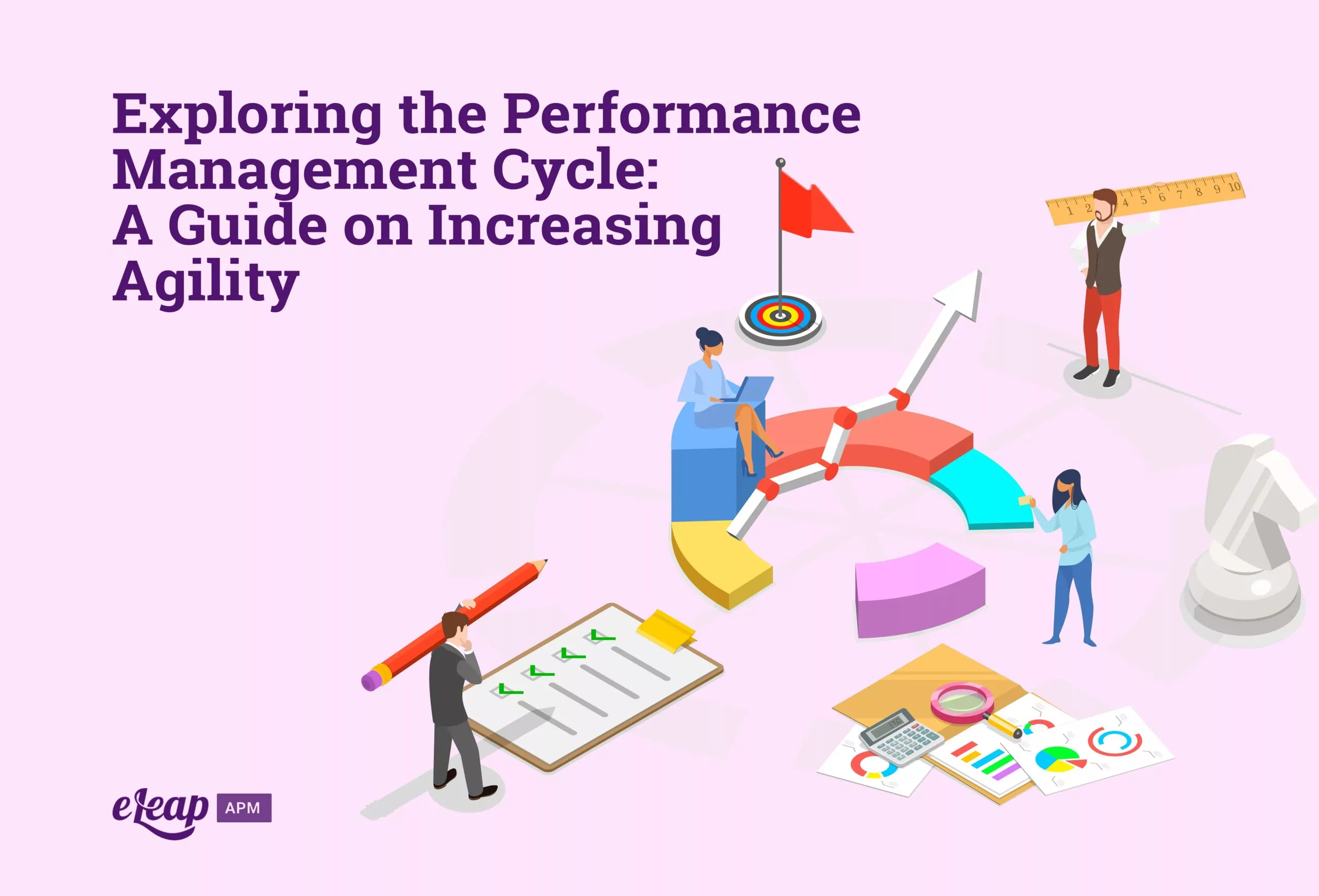Exploring the Performance Management Cycle: A Guide on Increasing Agility
How to analyze and measure your organization’s collaborative successes and failures

Performance management (PM) has a long history within modern organizations. However, it has undergone continual evolution. Today’s PM best practices would be hardly recognizable to a business leader from several decades ago. That’s thanks in part to the move away from the punitive carrot-and-stick motivation method and toward something that supports employees in their development.

One thing that has evolved along with those best practices is the performance management cycle. Today’s cycle is probably more easily recognizable to leaders of the past than the best practices, but at heart, they’ve changed. And that change is ongoing. In this guide, we’ll explore the performance management cycle, as well as ways to make it more agile to cope with business in the modern world.
Why Does Performance Management Matter?
At its heart, performance management is the art of ensuring that employees are performing to expectations. It uses a continuous combination of stages to provide feedback for employees on their performance and to guide necessary improvements while rewarding good performance. However, it’s not all about boosting productivity and removing errors from processes. Some of the knock-on benefits of modern PM include:
- Motivation – Employees who receive active guidance and assistance in improving their performance experience higher levels of motivation, which in turn leads to performance increases.
- Engagement – Employees who receive ongoing feedback from managers and business leaders are more engaged than those who do not, which affects morale, productivity, and other critical metrics.
- Alignment – When employees are engaged, motivated, and guided, it becomes possible to achieve better alignment with organizational goals and objectives.
Those are vital goals, as most leaders would agree. What role does each stage of the performance management cycle play in achieving them, though, and how can those stages be adjusted to meet agility/flexibility needs?
The Performance Management Cycle
The performance management cycle consists of four stages or pillars. These are:
- Planning
- Monitoring
- Reviewing
- Rewarding
However, to bring that cycle into the modern world, we really need to make some changes. A more agile approach would look like this:
- Planning
- Monitoring
- Developing
- Rating/Reviewing
- Rewarding
Two slight changes – the addition of another stage and the slight modification of another – are all that are necessary to create a more agile performance management cycle. Now let’s take a closer look at what each of these stages constitutes.
Planning
During this stage, you will work in advance to set expectations, clarify goals, and set milestones. This is usually best done with the employee, as this ensures a collaborative process and better understanding. Plus, it ensures that both the employee and the manager are on the same page when it comes time for reviewing, rating, and rewarding.
This stage is really all about laying the groundwork for what will come afterward – the foundation of success, if you will. Clarity is the byword here. It is the manager’s responsibility to make sure that the employee is completely clear about expectations relating to their performance and handling of situations.
Monitoring
This stage is exactly what it sounds like. The manager will monitor the employee’s performance and measure results. Ongoing feedback should be provided throughout this stage so that the employee can connect the dots between input and output (actions and performance) in real time.
This gets around one of the largest drawbacks to the outdated once or twice-annual performance review, which provided no grounding in reality and based pay raise decisions on performance so far in the past that the employee was unlikely to even remember the incident. They were much less likely to take any valuable lessons from the experience of being denied a raise due to their performance in these situations.
Developing
This stage is often omitted from the performance management cycle, but there are many reasons that it should be included. It is the natural consequence of providing ongoing, real-time feedback for employees relating to their performance. In this stage, management and the employee will work together to develop the capabilities necessary to meet performance expectations, particularly where that performance is lagging.
This can include additional training, skills development, cross-training, and more. Development can encourage employees to continue improving themselves and increases both retention and loyalty.
Rating
The rating/review stage is where management evaluates the employee’s performance. This evaluation should be objective, not subjective, and should be based on measurable metrics and set standards agreed to during the initial planning stage.
Rewarding
The final stage of the performance management cycle is “rewarding.” Employees who have performed well should be rewarded in acknowledgment of their achievements and contributions. The question remains – how do you do that? It can be virtually anything, from recognition in front of peers to a financial incentive. However, many employees today value things beyond money – additional time off, access to a wellness/fitness facility, and other non-monetary rewards can work quite well.
The challenge with the rewards end of the performance management cycle is ensuring that it is applied equitably across all employees. The entire team should be rewarded based on performance, and employees mustn’t feel that they put in more effort or achieved better performance and were rewarded with less than someone who put in less effort or performed to a lower expectation.
How Long Does the Performance Management Cycle Last?
Traditionally, the performance management cycle lasted a full year. However, that model was chock-full of errors and disconnects. It’s a much better option to have a continuous cycle that really never ends. When you include ongoing sit-downs and other touchpoints between the employee and the manager, it becomes possible to continuously assess performance and set new goals.
This is the key to achieving actual performance improvement. A one-year period is simply too long a span for PM to achieve measurable results. In addition, most employees find that the process lacks value. When accelerated – once per quarter, for instance – employees can connect with the process much more, and it can deliver critical performance improvements.
A Cultural Shift
The modern performance management cycle represents more than just an iterative step toward a more agile way of increasing output. It represents a cultural shift away from outdated management methods and toward a brighter future where employees are supported, developed, and valued. Achieving that shift is no small task, but it can be done with dedication and the right tools.